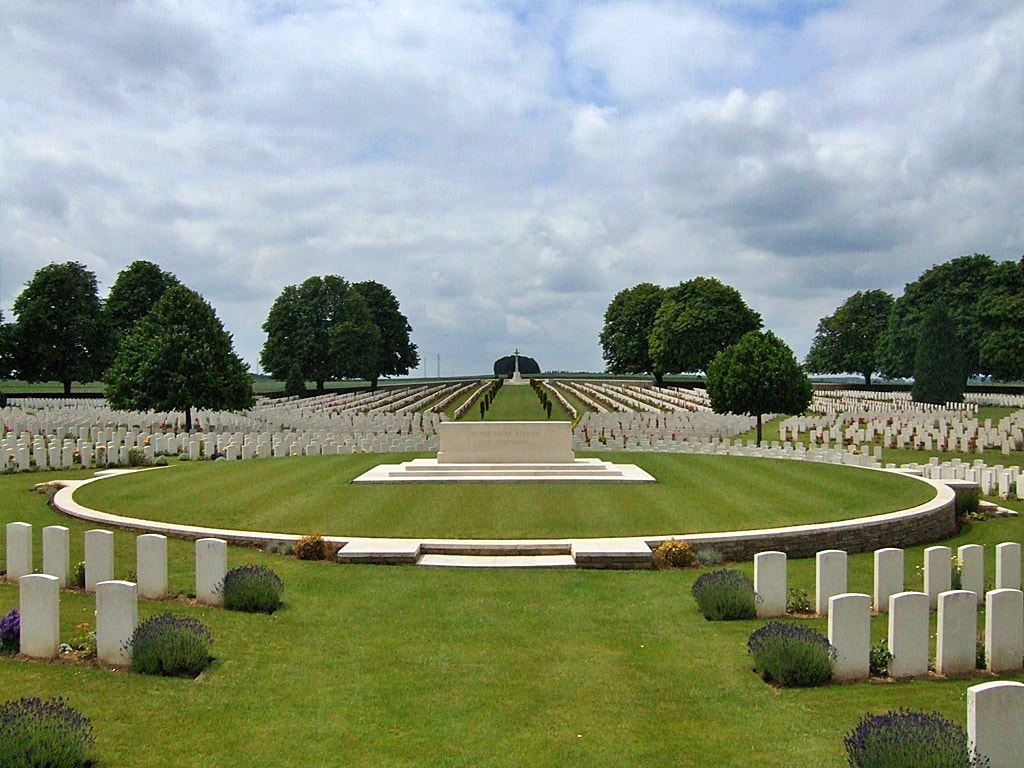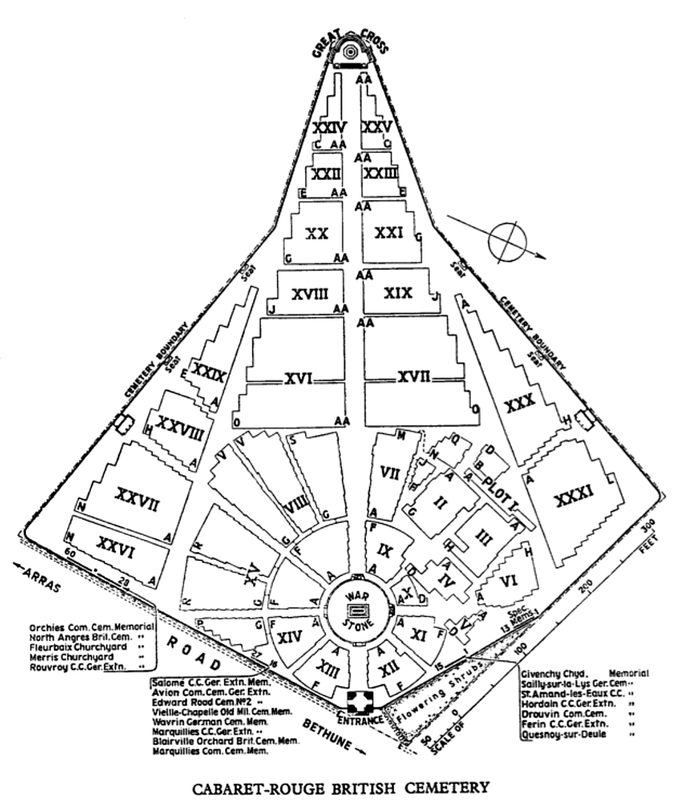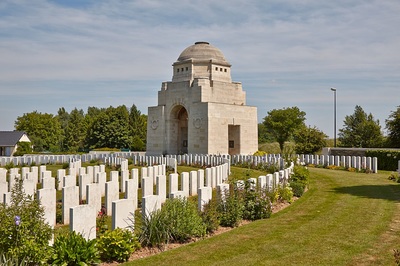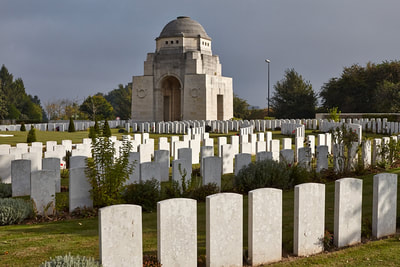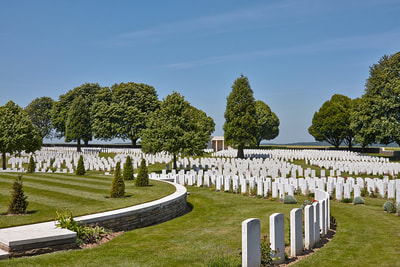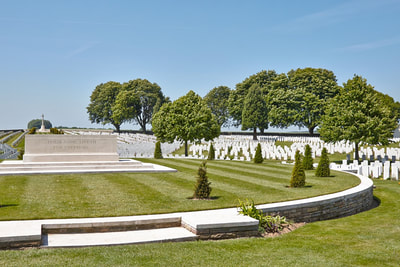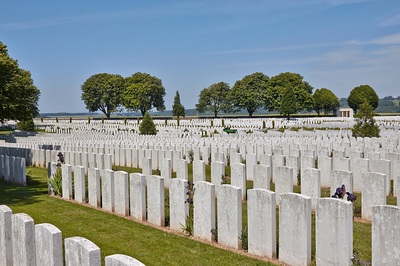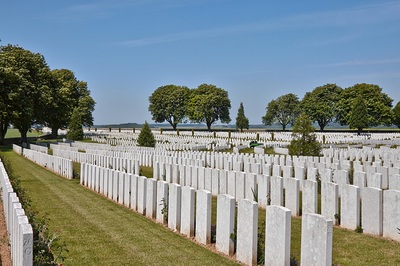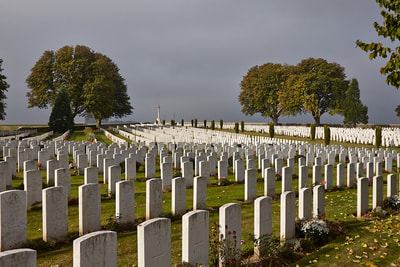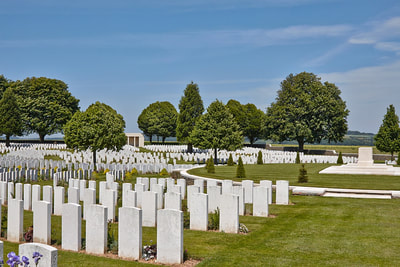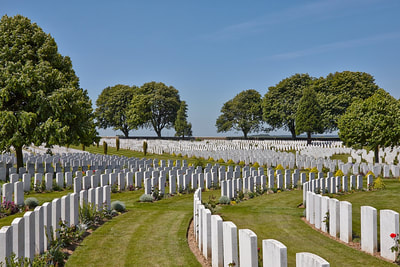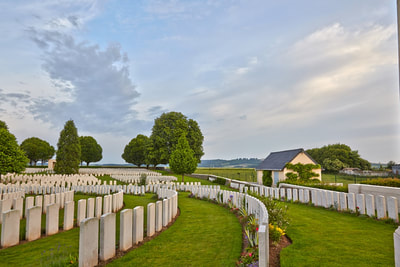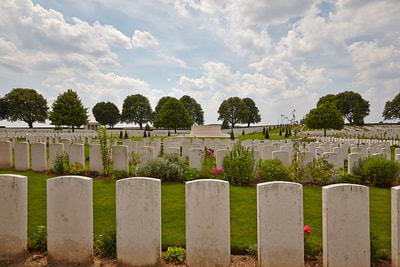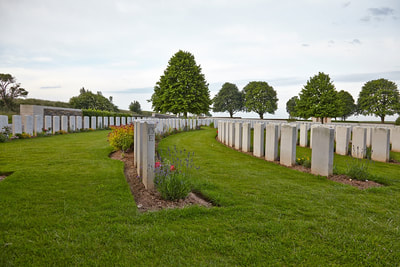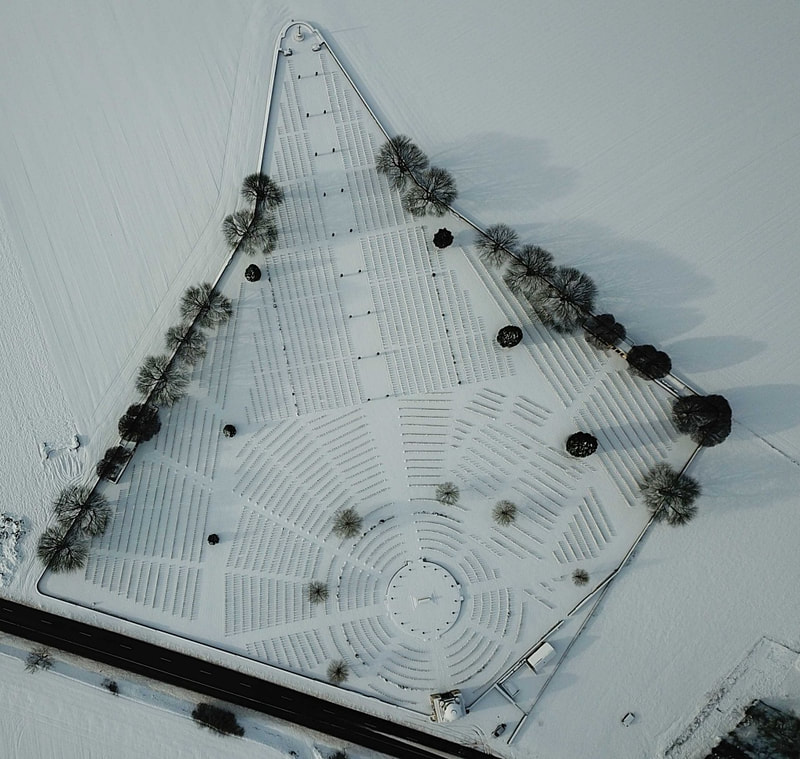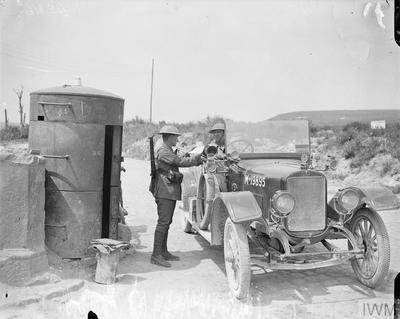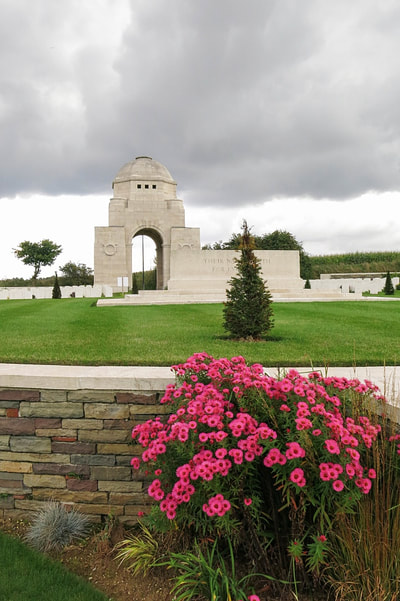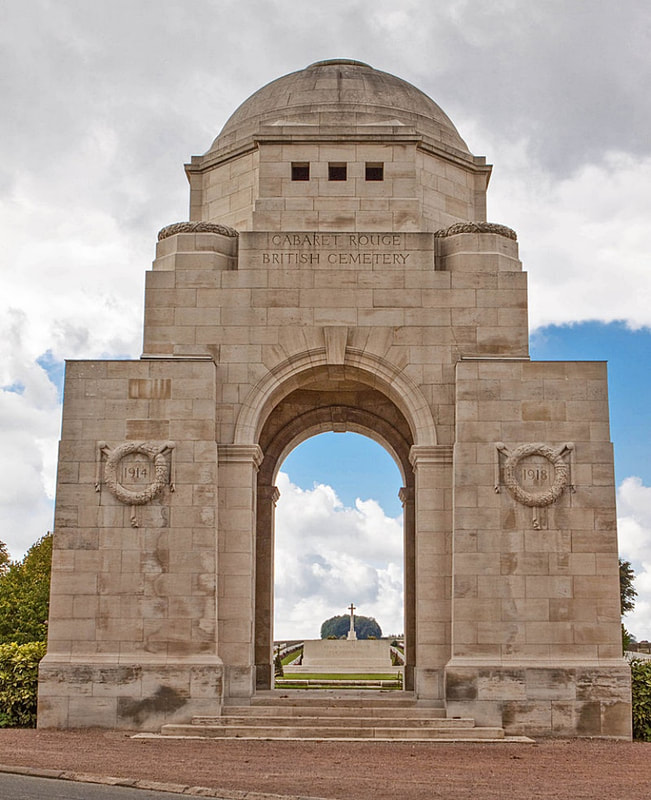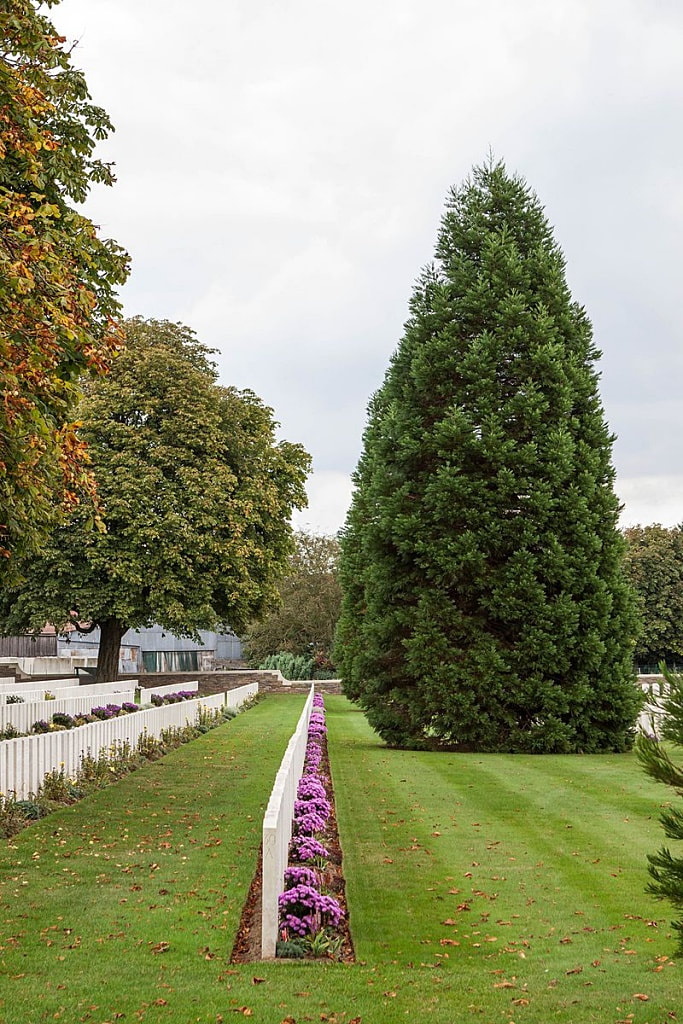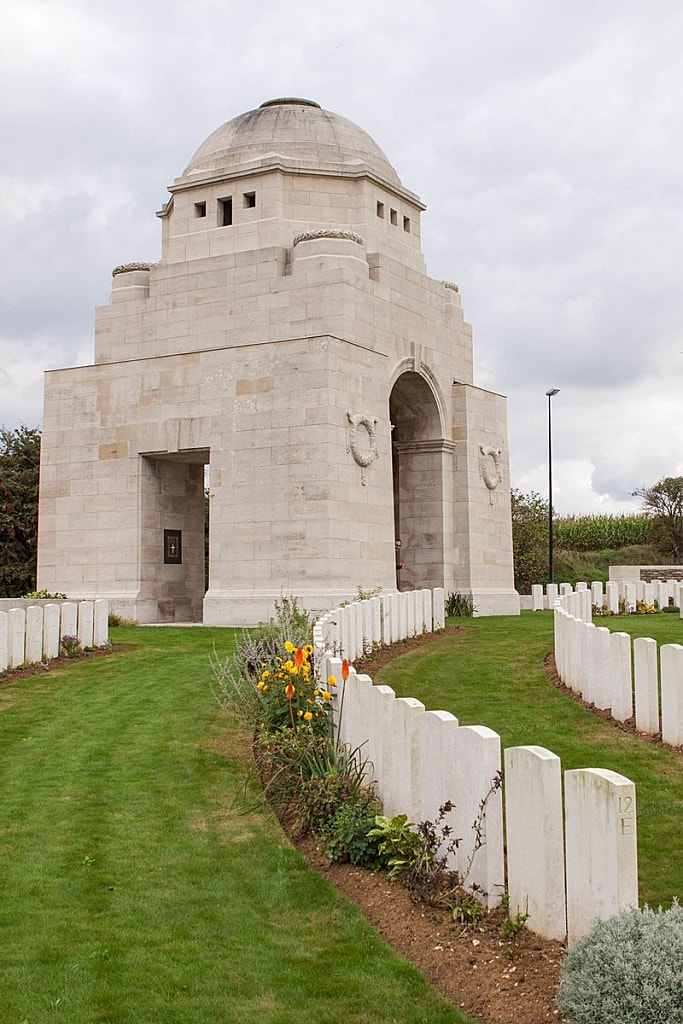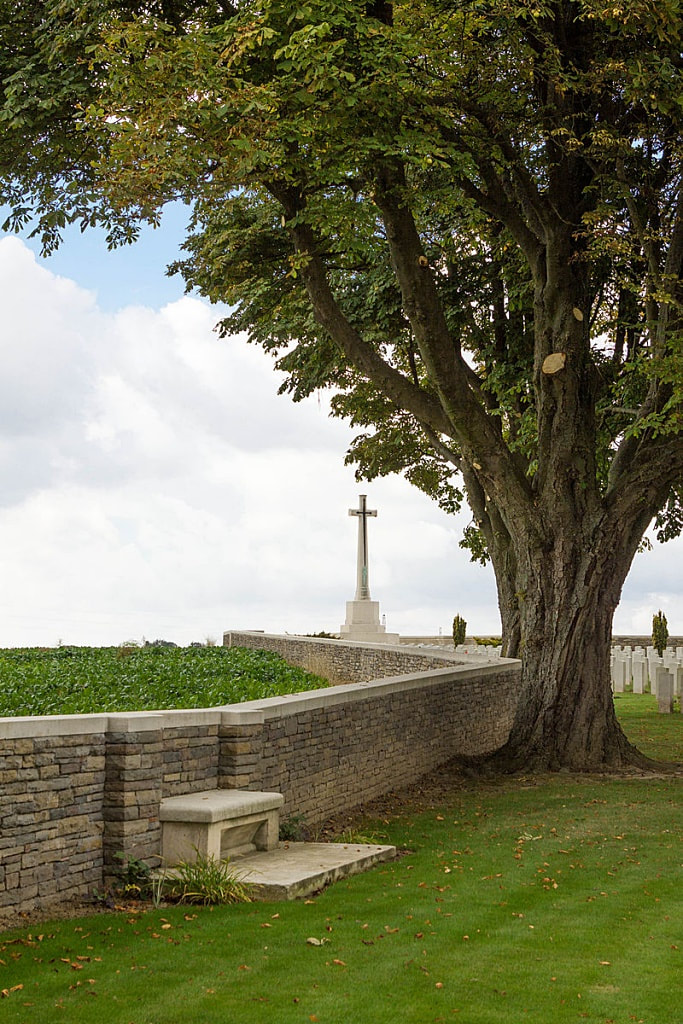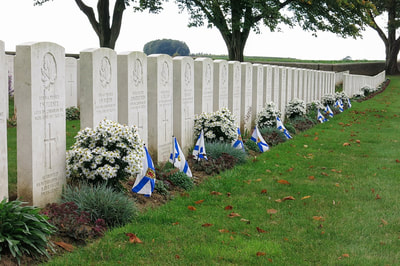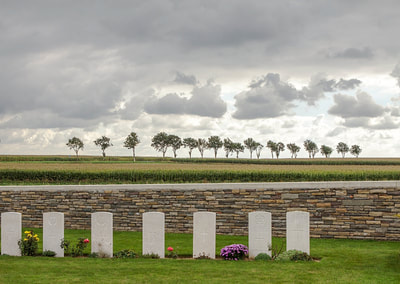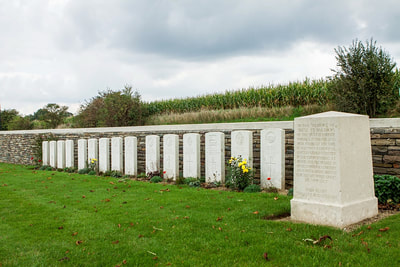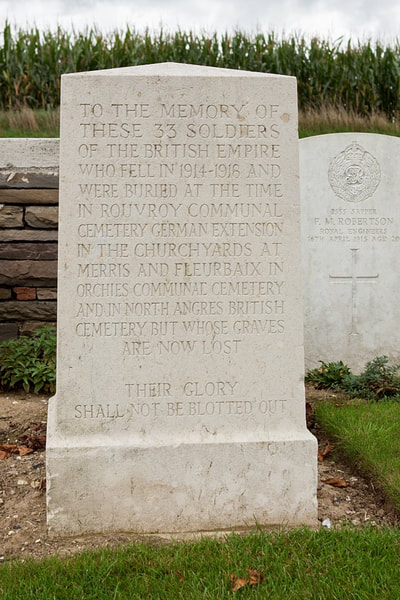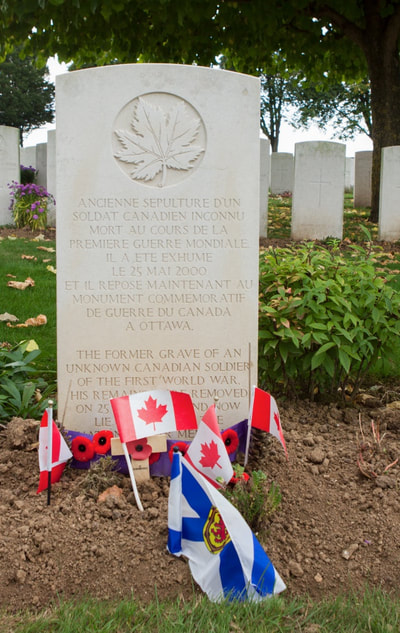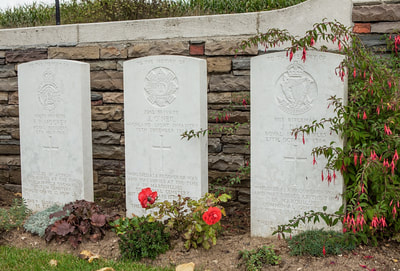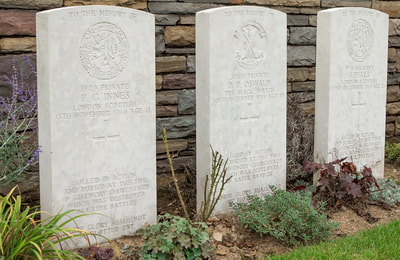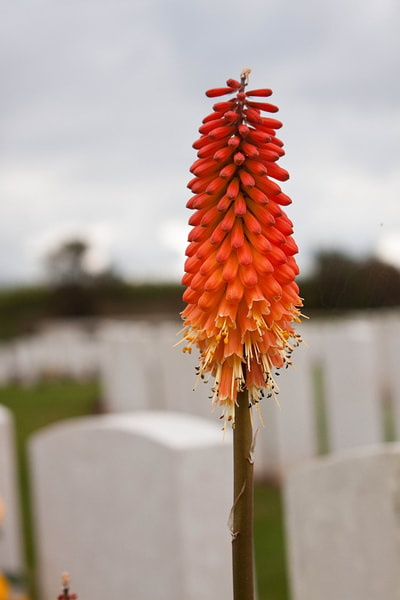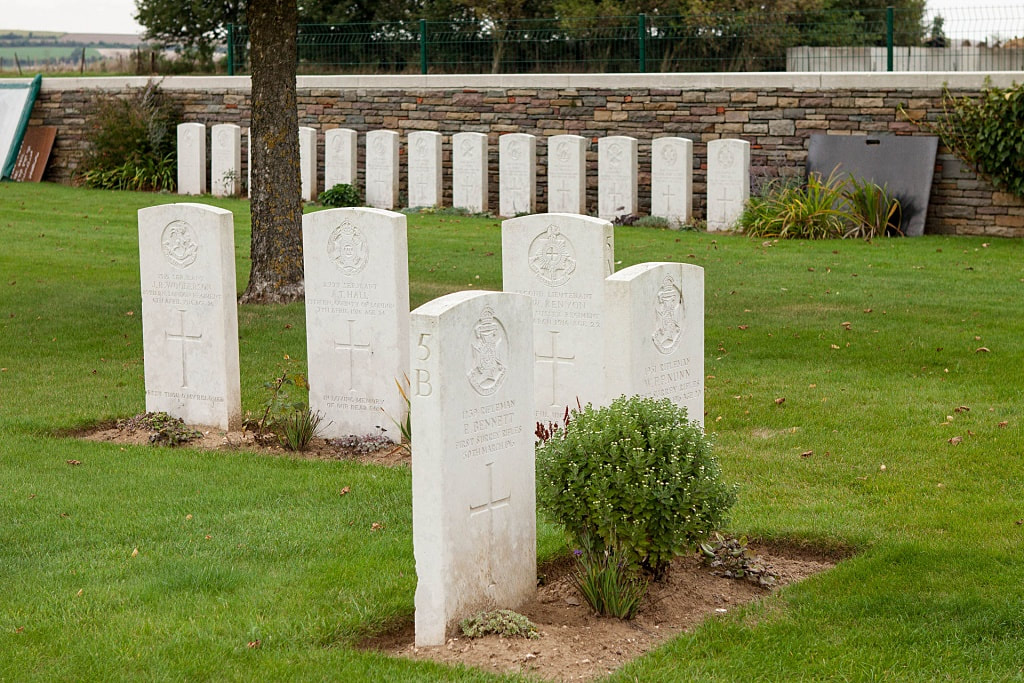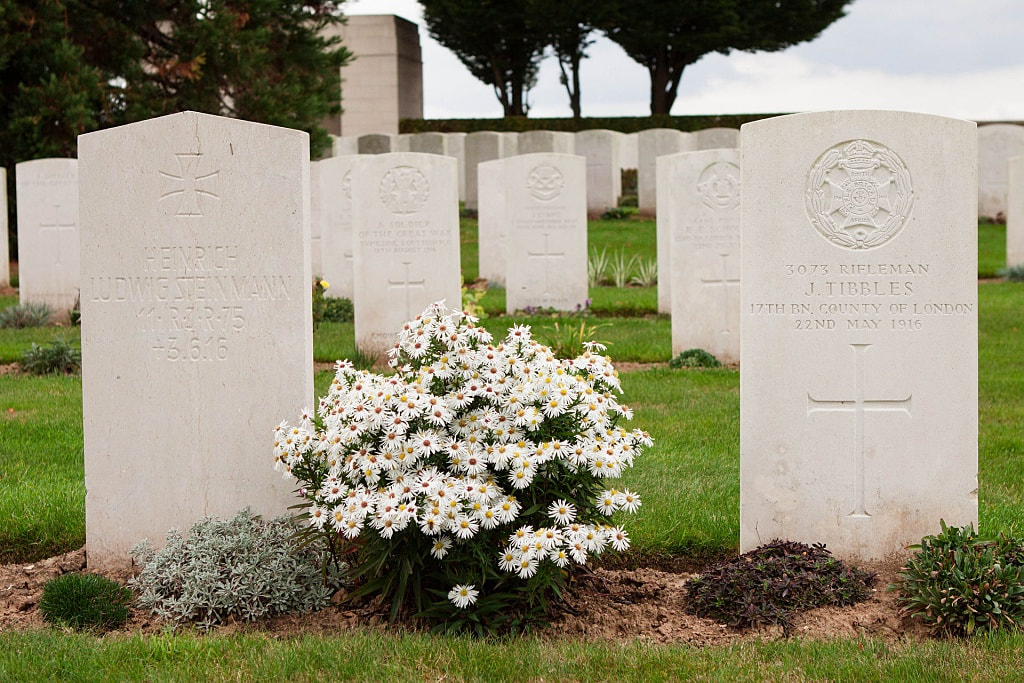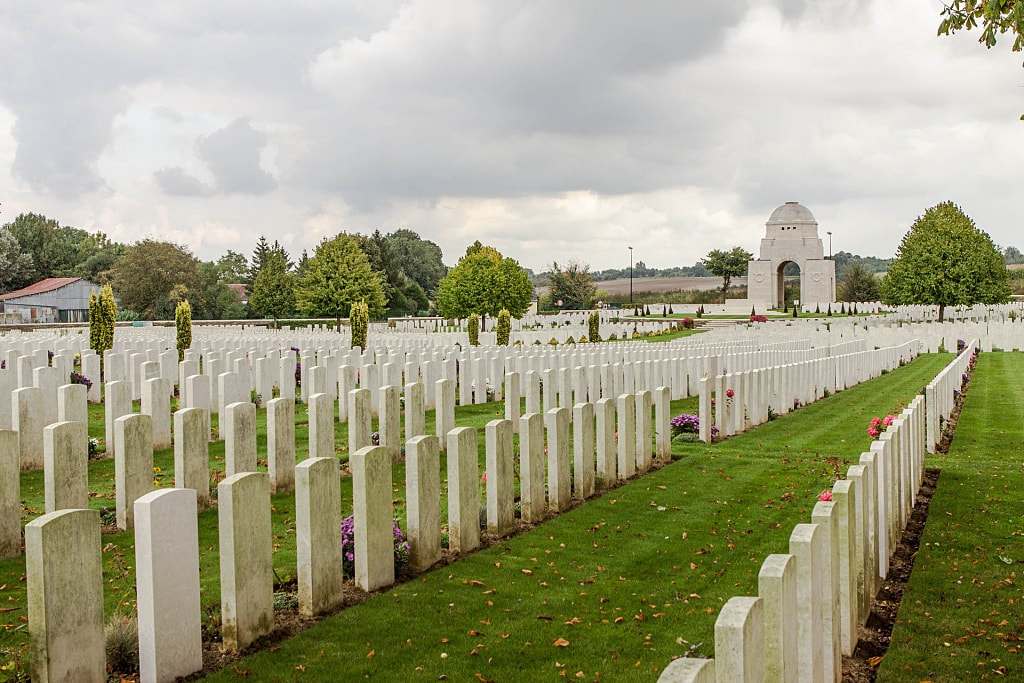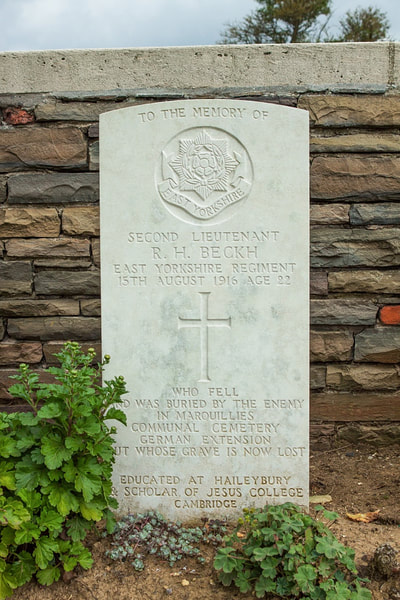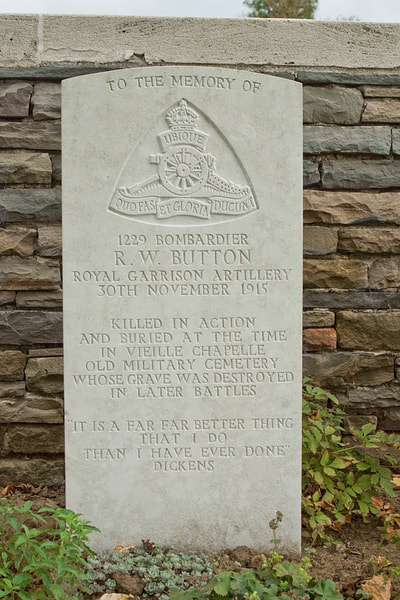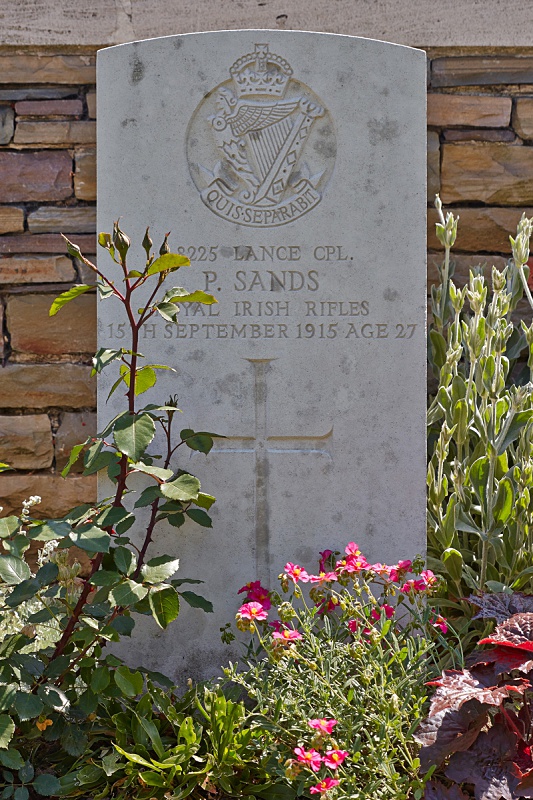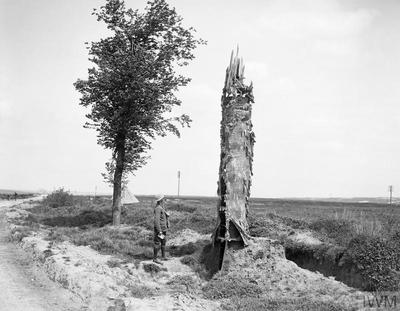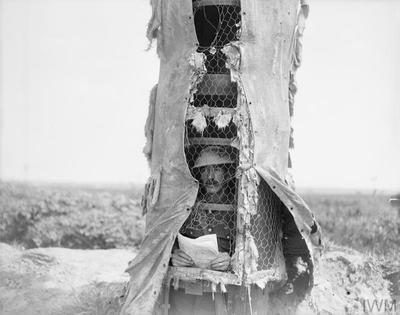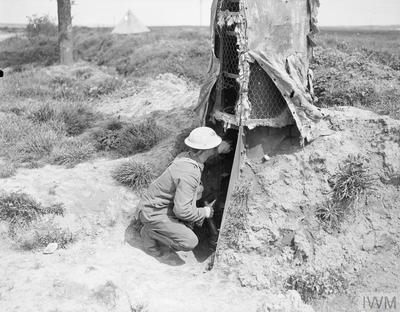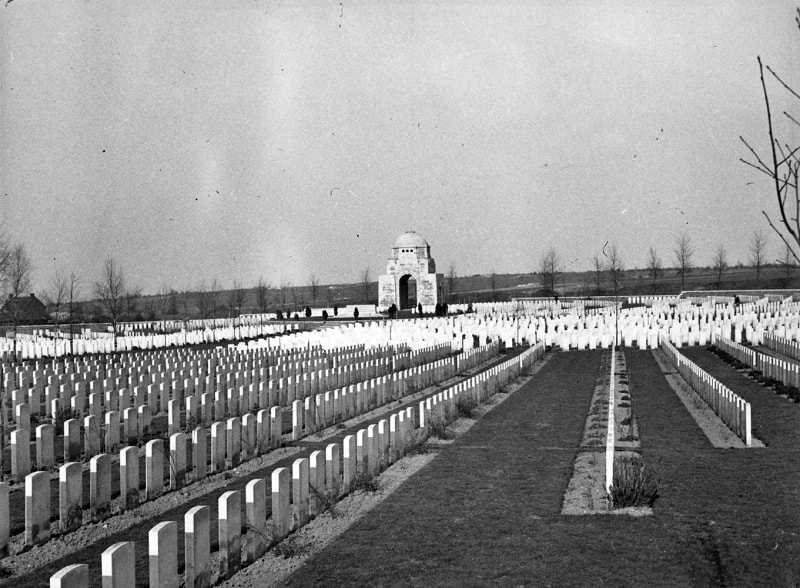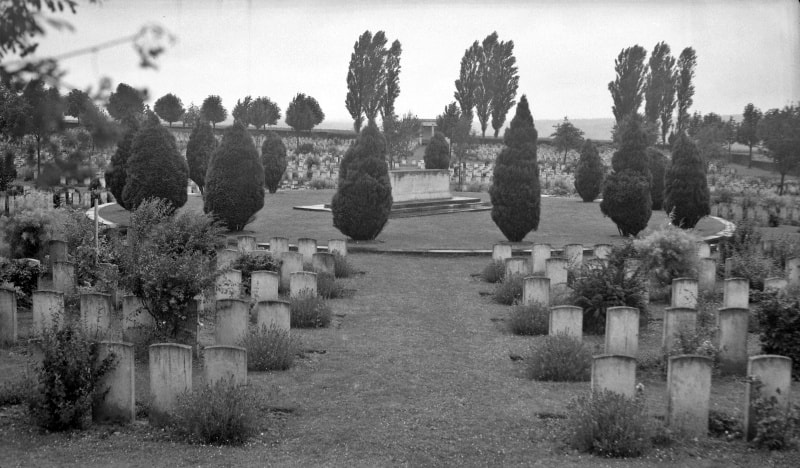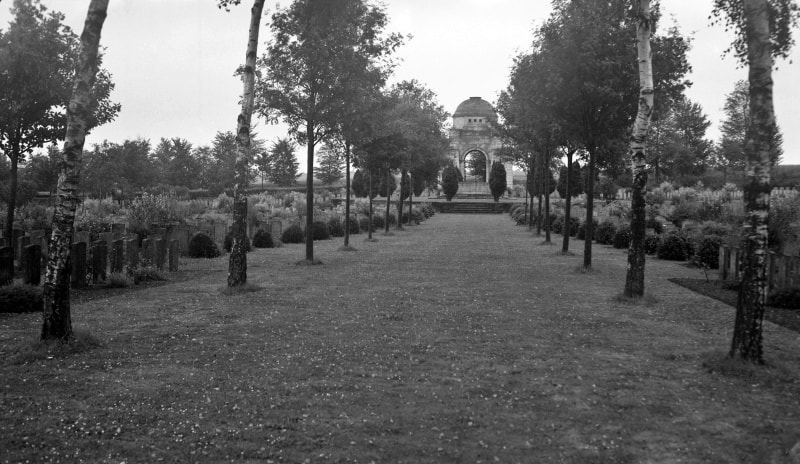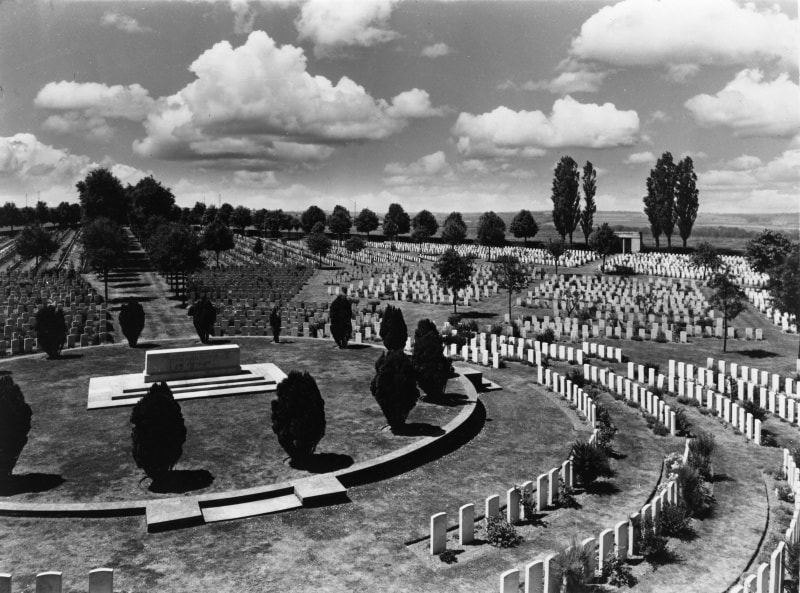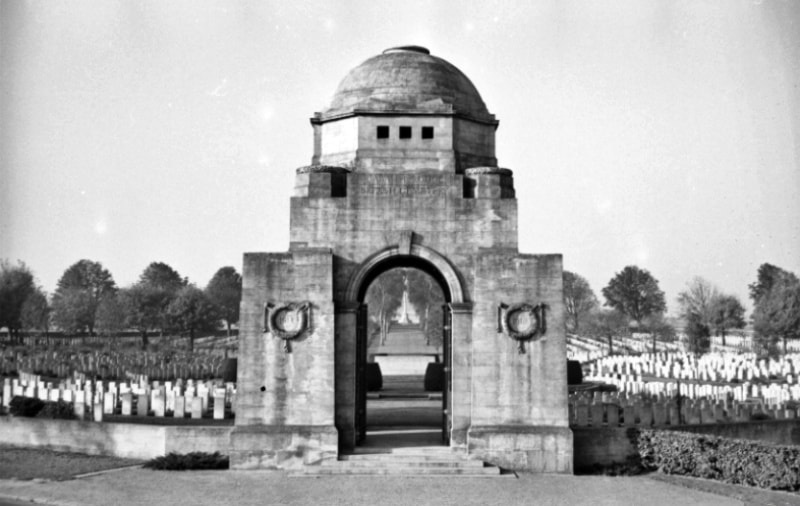CABARET-ROUGE BRITISH CEMETERY
Souchez
Pas De Calais
France
Roll of Honour
Listed by Surname
Image above © Carl Liversage @carl_liversage
Location Information
Cabaret-Rouge British Cemetery lies just south of the town of Souchez and 11.4 km. north of the centre of Arras.
From the centre of Arras take rue Meaulens, D264 and Route de Bethune through Sainte Catherine. At the roundabout, take the third exit onto the D937 to Souchez. The cemetery is located 6.6 km. further on the left.
Historical Information
Caberet Rouge was a small, red-bricked, red-tiled café that stood close to this site in the early days of the First World War. The café was destroyed by shellfire in March 1915 but it gave its unusual name to this sector and to a communication trench that led troops up the front-line. Commonwealth soldiers began burying their fallen comrades here in March 1916. The cemetery was used mostly by the 47th (London) Division and the Canadian Corps until August 1917 and by different fighting units until September 1918. It was greatly enlarged in the years after the war when as many as 7,000 graves were concentrated here from over 100 other cemeteries in the area. For much of the twentieth century, Cabaret Rouge served as one of a small number of ‘open cemeteries’ at which the remains of fallen servicemen newly discovered in the region were buried. Today the cemetery contains over 7,650 burials of the First World War, over half of which remain unidentified.
The Canadian Connection
Many different Commonwealth units served in this sector during the war and the cemetery contains the graves of British, Irish, Australian, New Zealand, Indian and South African soldiers. It is also the final resting place of over 70 officers of the Royal Flying Corps and Royal Air Force. Cabaret Rouge has a particularly close connection with the Canadian Infantry, however, as hundreds of Canadians who were killed at the Battle of Vimy Ridge in April 1917 were ultimately laid to rest here.
The cemetery and shelter buildings were designed by former Canadian Army officer Frank Higginson. Higginson worked as an architect for the Commonwealth War Graves Commission in the 1920s and later acted as Secretary to the Commission.
In May 2000 the remains of an unknown Canadian soldier were taken from this cemetery and buried in a special tomb at the foot of the National War Memorial in Ottawa, Canada. A focal point for remembrance, he represents more than 116,000 Canadians who lost their lives during the First World War. A headstone in plot 8, Row E, Grave 7 marks his original grave.
The Importance of Vimy Ridge
German forces seized the village of Souchez and the surrounding countryside as they advanced through Northern France in 1914. German artillery units were able to control this sector of the front from two ridges which flanked the village – Vimy Ridge to the east, and Notre Dame de Lorette to the west. After 12 months of bitter fighting, the French forces captured the high ground at Lorette in the autumn of 1915. When the French handed this part of the line to the Commonwealth forces in March 1916, Vimy Ridge was still in German hands.
Vimy Ridge was the key to the German defensive system in this sector. It protected an area of occupied France in which coal mines and factories were in full production for the German war effort and the fortified vantage points on the ridge dominated the surrounding battlefields.
The Battle of Vimy Ridge formed part of the opening phase of the British-led Battle of Arras which began on 9 April 1917. The Canadian forces managed to capture most of the German positions on the ridge on the first day of the attack and by 12 April they had occupied the village of Thélus and pushed the Germans back to the Oppy-Méricourt line. By taking the ridge the Canadians achieved a major tactical success, but in just four days of fighting they suffered over 10,000 casualties, 3,500 of whom were killed. The battle was the first action in which all four divisions of the Canadian Corps fought together and had a major impact on Canadian national identity.
Total Burials: 7,661.
World War One Identified Casualties: United Kingdom 2,765, Canada 325, Australia 55, South Africa 28, India 15, New Zealand 5, Germany 2. Total 3,195.
World War One Unidentified Casualties: 4,465.
World War Two Identified Casualty: United Kingdom 1.
The cemetery was designed by Sir Frank Higginson
Dedications
5337 Private Leonard Brace, 5th Bn. King's Shropshire Light Infantry, 11th June 1916, aged 30.
Remembered by Grandson, Michael Brace
Cabaret-Rouge British Cemetery lies just south of the town of Souchez and 11.4 km. north of the centre of Arras.
From the centre of Arras take rue Meaulens, D264 and Route de Bethune through Sainte Catherine. At the roundabout, take the third exit onto the D937 to Souchez. The cemetery is located 6.6 km. further on the left.
Historical Information
Caberet Rouge was a small, red-bricked, red-tiled café that stood close to this site in the early days of the First World War. The café was destroyed by shellfire in March 1915 but it gave its unusual name to this sector and to a communication trench that led troops up the front-line. Commonwealth soldiers began burying their fallen comrades here in March 1916. The cemetery was used mostly by the 47th (London) Division and the Canadian Corps until August 1917 and by different fighting units until September 1918. It was greatly enlarged in the years after the war when as many as 7,000 graves were concentrated here from over 100 other cemeteries in the area. For much of the twentieth century, Cabaret Rouge served as one of a small number of ‘open cemeteries’ at which the remains of fallen servicemen newly discovered in the region were buried. Today the cemetery contains over 7,650 burials of the First World War, over half of which remain unidentified.
The Canadian Connection
Many different Commonwealth units served in this sector during the war and the cemetery contains the graves of British, Irish, Australian, New Zealand, Indian and South African soldiers. It is also the final resting place of over 70 officers of the Royal Flying Corps and Royal Air Force. Cabaret Rouge has a particularly close connection with the Canadian Infantry, however, as hundreds of Canadians who were killed at the Battle of Vimy Ridge in April 1917 were ultimately laid to rest here.
The cemetery and shelter buildings were designed by former Canadian Army officer Frank Higginson. Higginson worked as an architect for the Commonwealth War Graves Commission in the 1920s and later acted as Secretary to the Commission.
In May 2000 the remains of an unknown Canadian soldier were taken from this cemetery and buried in a special tomb at the foot of the National War Memorial in Ottawa, Canada. A focal point for remembrance, he represents more than 116,000 Canadians who lost their lives during the First World War. A headstone in plot 8, Row E, Grave 7 marks his original grave.
The Importance of Vimy Ridge
German forces seized the village of Souchez and the surrounding countryside as they advanced through Northern France in 1914. German artillery units were able to control this sector of the front from two ridges which flanked the village – Vimy Ridge to the east, and Notre Dame de Lorette to the west. After 12 months of bitter fighting, the French forces captured the high ground at Lorette in the autumn of 1915. When the French handed this part of the line to the Commonwealth forces in March 1916, Vimy Ridge was still in German hands.
Vimy Ridge was the key to the German defensive system in this sector. It protected an area of occupied France in which coal mines and factories were in full production for the German war effort and the fortified vantage points on the ridge dominated the surrounding battlefields.
The Battle of Vimy Ridge formed part of the opening phase of the British-led Battle of Arras which began on 9 April 1917. The Canadian forces managed to capture most of the German positions on the ridge on the first day of the attack and by 12 April they had occupied the village of Thélus and pushed the Germans back to the Oppy-Méricourt line. By taking the ridge the Canadians achieved a major tactical success, but in just four days of fighting they suffered over 10,000 casualties, 3,500 of whom were killed. The battle was the first action in which all four divisions of the Canadian Corps fought together and had a major impact on Canadian national identity.
Total Burials: 7,661.
World War One Identified Casualties: United Kingdom 2,765, Canada 325, Australia 55, South Africa 28, India 15, New Zealand 5, Germany 2. Total 3,195.
World War One Unidentified Casualties: 4,465.
World War Two Identified Casualty: United Kingdom 1.
The cemetery was designed by Sir Frank Higginson
Dedications
5337 Private Leonard Brace, 5th Bn. King's Shropshire Light Infantry, 11th June 1916, aged 30.
Remembered by Grandson, Michael Brace
Images in this gallery © Geerhard Joos
Images below © Carl Liversage @carl_liversage
Images in this gallery © Werner Van Caneghem
Shot at Dawn
8225 Lance Corporal Peter Sands, 1st Bn. Royal Irish Rifles, executed for desertion 15th September 1915, aged 27. Special memorial - Fleurbaix Chyd. 41, originally buried in Fleurbaix Churchyard, his grave is now lost.
On 26 Feb 1915, when serving at Laventie, he was granted leave until 1 March. Sands failed to return & was arrested in Belfast on 7 July.
At trial, he said that on 2 March he had reported his travel warrant as lost to the Belfast depot; that he had gone away when given no assistance; but made no further attempt to rejoin his unit.
He added: ‘If I had intended to desert I would have worn plain clothes but up to the time I was arrested I always wore uniform’.
Despite his proven good character, all formation commanders recommended execution. (Corns, pp.229-230)
26248 Private J. Wishard, 7th Bn. Royal Inniskilling Fusiliers, executed for desertion 15th June 1917. Special memorial - Merris Chyd. 51, originally buried in Merris Churchyard, his grave is now lost. He disappeared between Hazebrouck & Bailleul, when on his way to join his battalion. Wishard was arrested 3 weeks later at Boulogne, but escaped & assumed a civilian disguise — which lasted him only a further 12 days. At trial he said that his child was ill. (Putkowski,pp. 175-176)
8225 Lance Corporal Peter Sands, 1st Bn. Royal Irish Rifles, executed for desertion 15th September 1915, aged 27. Special memorial - Fleurbaix Chyd. 41, originally buried in Fleurbaix Churchyard, his grave is now lost.
On 26 Feb 1915, when serving at Laventie, he was granted leave until 1 March. Sands failed to return & was arrested in Belfast on 7 July.
At trial, he said that on 2 March he had reported his travel warrant as lost to the Belfast depot; that he had gone away when given no assistance; but made no further attempt to rejoin his unit.
He added: ‘If I had intended to desert I would have worn plain clothes but up to the time I was arrested I always wore uniform’.
Despite his proven good character, all formation commanders recommended execution. (Corns, pp.229-230)
26248 Private J. Wishard, 7th Bn. Royal Inniskilling Fusiliers, executed for desertion 15th June 1917. Special memorial - Merris Chyd. 51, originally buried in Merris Churchyard, his grave is now lost. He disappeared between Hazebrouck & Bailleul, when on his way to join his battalion. Wishard was arrested 3 weeks later at Boulogne, but escaped & assumed a civilian disguise — which lasted him only a further 12 days. At trial he said that his child was ill. (Putkowski,pp. 175-176)



